
Sample Sources
The sources below are those contained in our three curated collections—covering themes of Passover, Gender Roles, and Holocaust Resistance. They represent a fraction of the thousands of sources that will be available when the full site launches in 2024.
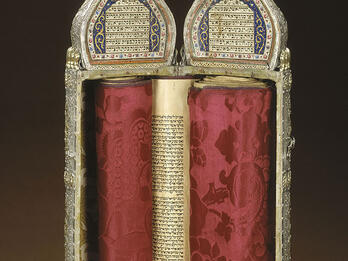
Torah Scroll and Case
The origin of this Torah scroll is in Turkey. It was donated by the Camondo family, one of the most important Jewish families in Istanbul, many of whose members settled in Paris and greatly…
Jokes and Their Relation to the Unconscious
The occurrence of self-criticism as a determinant may explain how it is that a number of the most apt jokes . . . have grown up on the soil of Jewish popular life. They are stories created by Jews and…
Is There a Need for a World Sephardi Federation? A Debate by Jewish Delegates in Vienna
My brothers and teachers: for some years, since I was enlightened by the luminous erudition of our pious forefathers, the rabbis in Babylon and the wise writers from Spain, my attention…
Flesh and Spirit
In the early period of Jewish history there was a considerable party which took a materialistic view of the national life, in the sense that it had no ideal beyond that of making the State supreme at…
Notes in Response to the Zionist Cause
3 Shevat 5663 [January 31, 1903]
From all the Zionist essays emerge that which we see with our very eyes: their entire purpose and effort is to instill the supposition among Jews that the Torah and…
From Death-Camp to Existentialism: A Psychiatrist’s Path to a New Therapy
In attempting this psychological presentation and a psychopathological explanation of the typical characteristics of a concentration camp inmate, I may give the impression that the human being is…
At the Heart of the Harem
Esteemed by his bosses, envied by his friends, husband of an intelligent wife, owner of a lovely house, Si Bou-Djemaa might well have been happy if the desire for a new wife had not tormented him.
Tal…

Jews and Ottomans Defending the City of Buda
From May through August 1541, the forces of the Ottoman Empire laid siege to the city of Buda (present day Budapest, Hungary) and captured it, ushering in 150 years of Ottoman rule. This illustration…
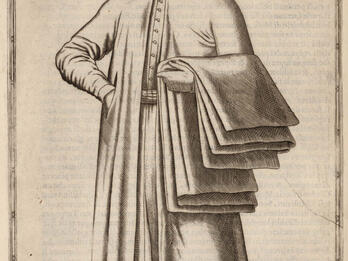
Jewish Merchant (Mercante Giudeo)
This depiction of a Jewish merchant is from a travelogue by French geographer Nicolas Nicolay, who is believed to have also done his own illustrations. Considered at the time a key source of…
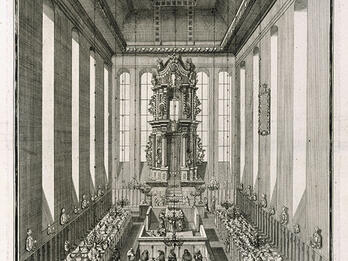
Alte Synagogue (Berlin)
Built by the non-Jewish architect Michael Kemmeter, the Alte Synagoge (Synagogue) was the first edifice in Berlin built specifically to serve this function. Originally known as the Heidereutergasse…
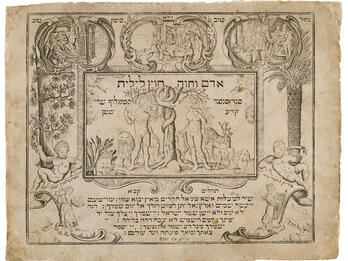
Amulet for Woman in Childbirth (Amsterdam)
This printed amulet to protect a woman in childbirth features a central scene depicting Adam and Eve and several animals in the Garden of Eden, with a snake coiled around the forbidden “tree of…
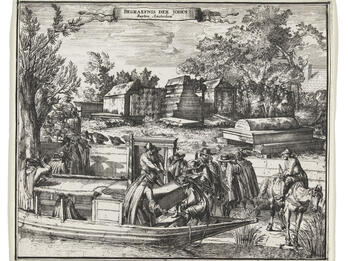
Jewish Funeral in Ouderkerk
This etching depicts a body being brought for burial in the Spanish and Portuguese Jewish cemetery at Ouderkerk, the oldest Jewish cemetery (est. 1614) in the Netherlands, located on the Amstel River.


